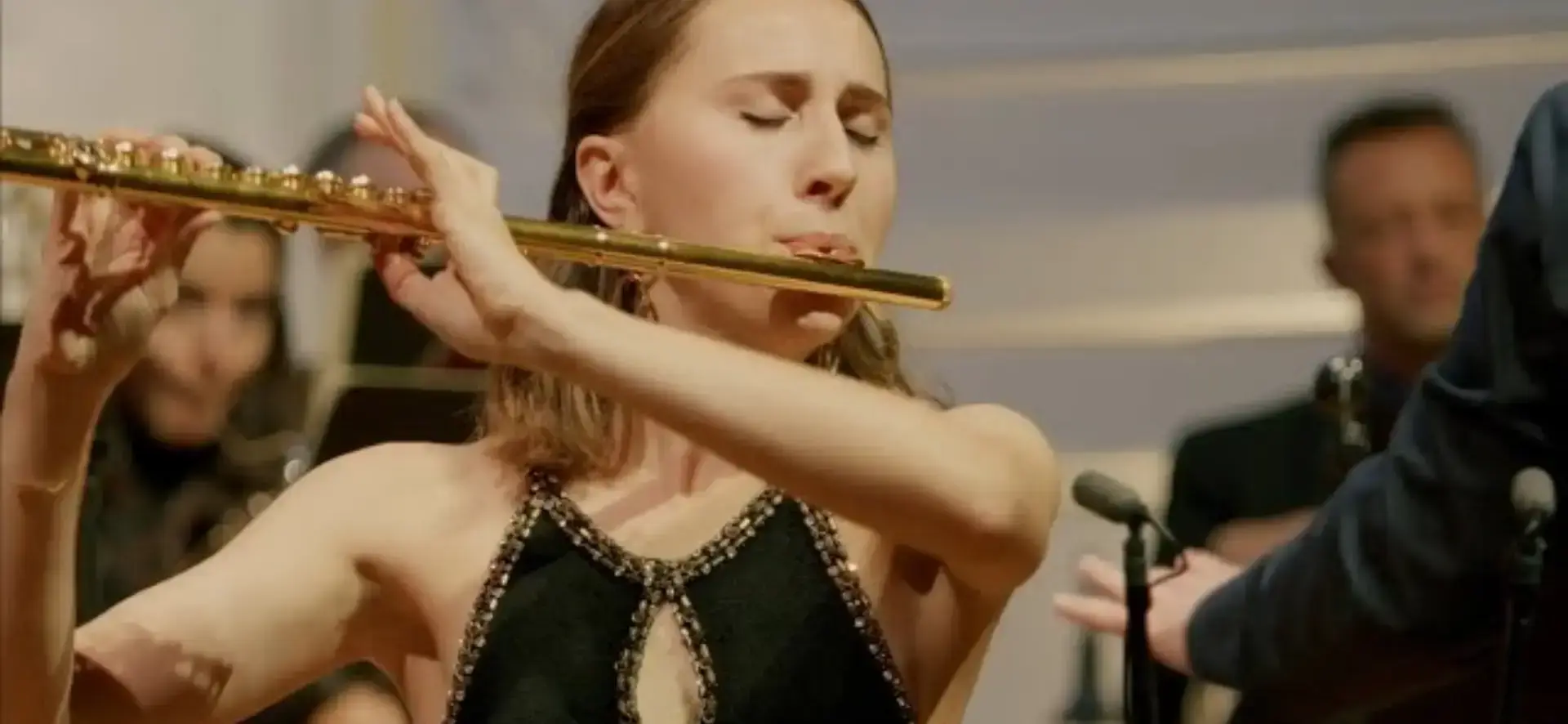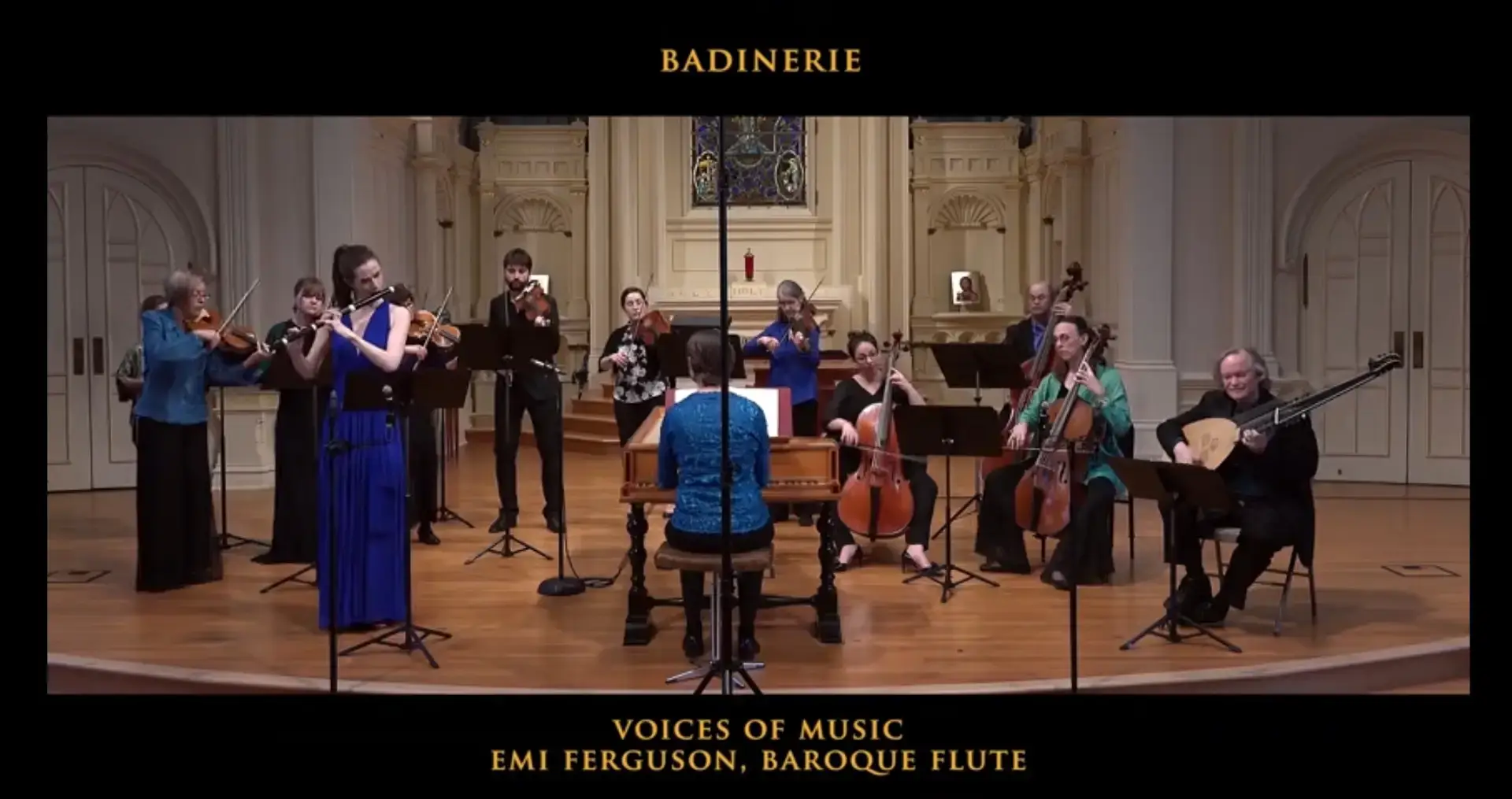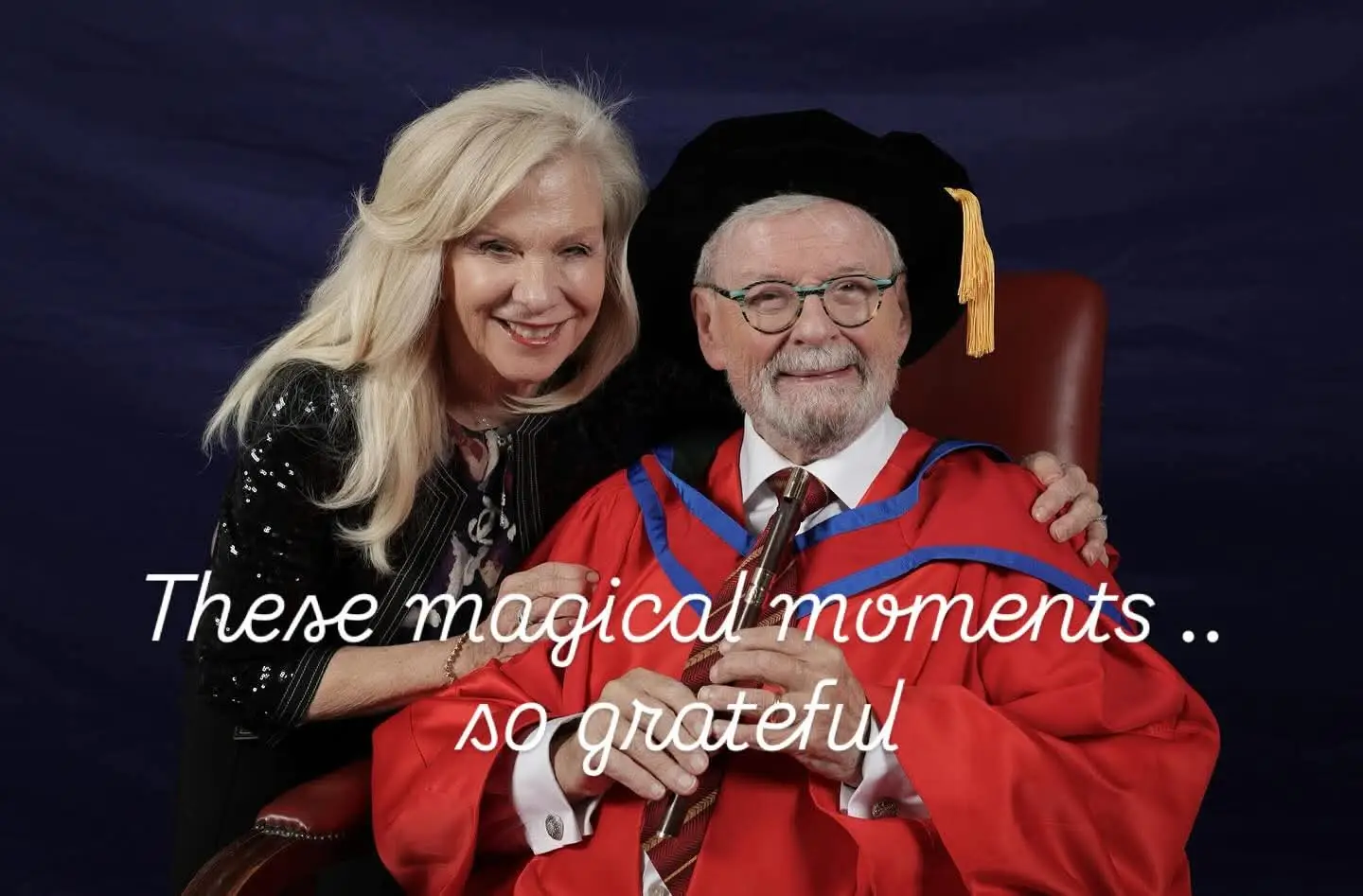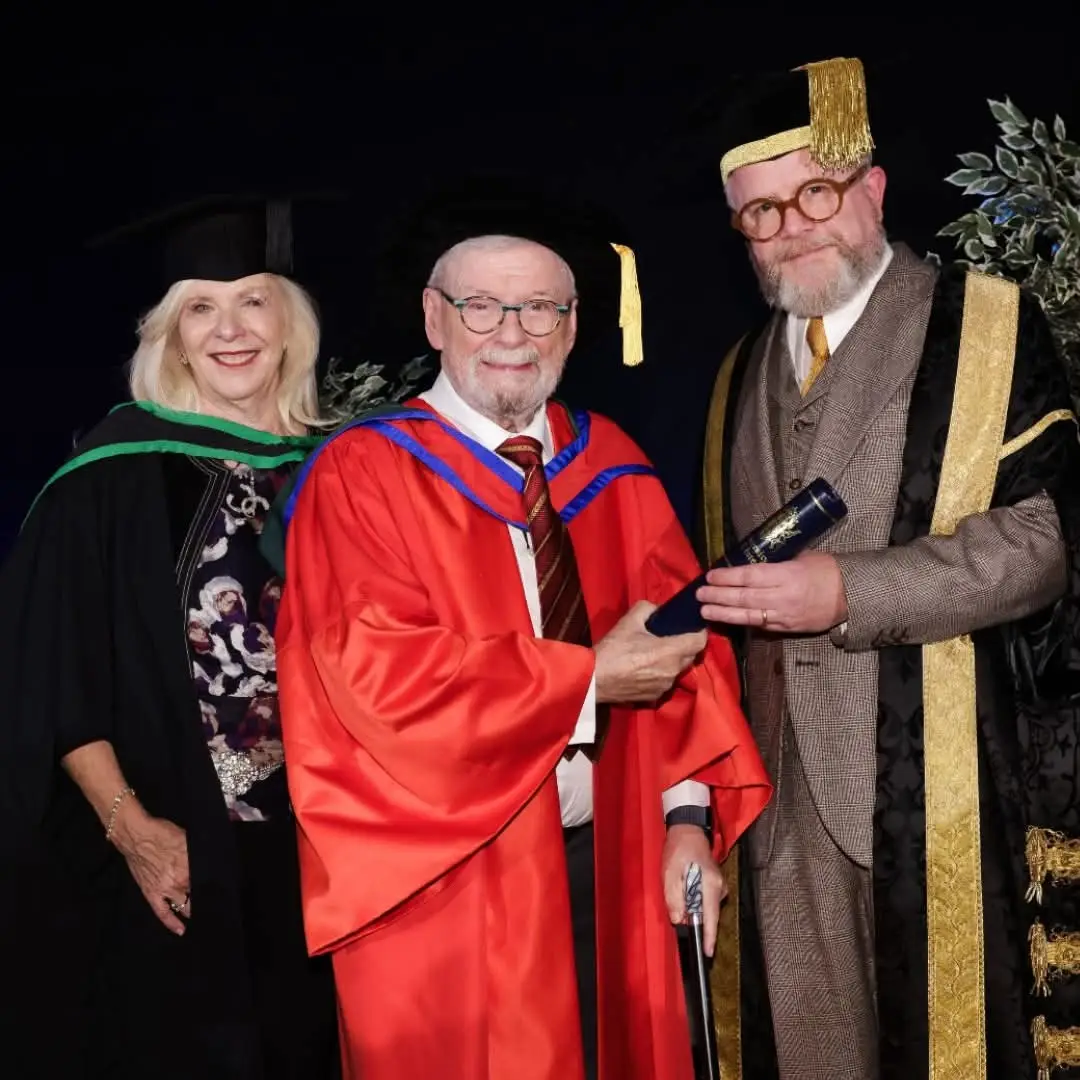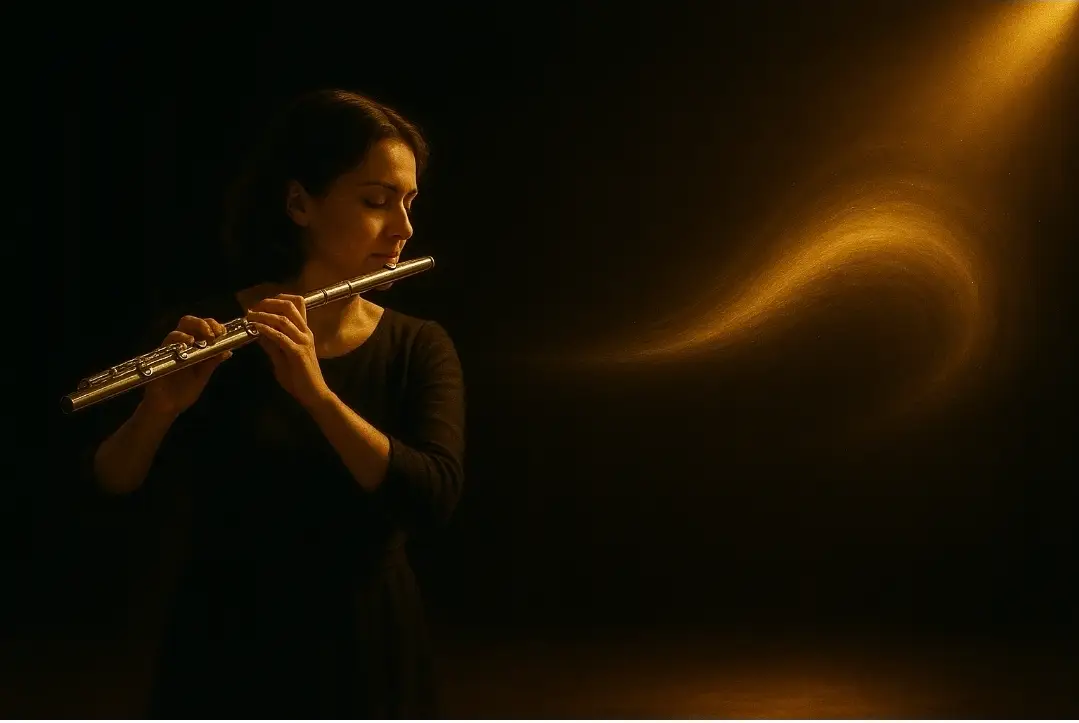In a newly released video on YouTube, flutist Paolo Taballione takes us on an extraordinary musical journey recorded five years ago but only now revealed to the public. The recital, held on September 12, 2019, at the historic Auditorium del Suffragio in Lucca, remained hidden from the world until its recent online premiere.
Now, five years later, we are privileged to witness this remarkable display of artistry and endurance, which has quickly captured the admiration of the flute community and beyond.
Recorded by Riccardo Parrucci, this concert features a daring and eclectic program of Telemann, Berio, Sciarrino, Maresz, and Ichiyanagi, showcasing a remarkable blend of Baroque elegance and modern experimentalism. The decision to release this recital now feels almost like a rediscovery of a hidden gem, allowing us to appreciate Taballione’s artistry and endurance as if experiencing it live for the first time.
Paolo Taballione: A Flutist of Extraordinary Talent
A true master of the flute, Paolo Taballione is recognized as one of the leading flutists of his generation. As Principal Flute of the Bavarian State Opera Orchestra, his career has taken him to prestigious stages and collaborations with world-renowned conductors.
Taballione’s sound is a hallmark of Italian flute tradition – warm, brilliant, and effortlessly expressive. His technical precision, phrasing, and control of color allow him to navigate vastly different styles with ease, making him an artist of exceptional versatility. This recital, performed without a single pause, is an astounding testament to both his stamina and his ability to seamlessly connect contrasting musical worlds.
A Carefully Structured Program: Tonal Contrasts and Evolution
Most recitals allow for short breaks between pieces, giving performers time to reset and refocus. However, Taballione eliminates all pauses, creating a continuous, immersive experience where each work transitions fluidly into the next. This marathon performance forces both performer and audience into a state of deep concentration, mirroring a kind of musical meditation or transcendence.
This uninterrupted format challenges traditional recital norms, transforming the program into one evolving musical entity rather than a collection of separate pieces. The careful interplay of tonal structure, texture, and style makes this recital as intellectually engaging as it is technically breathtaking.
A Structured Alternation: The Baroque Anchor vs. Contemporary Disruption
The Telemann Fantasias serve as the foundation of the recital, grounding it in melodic fluency and harmonic clarity. Telemann’s 12 Fantasias for solo flute (1732–33) are miniature masterpieces, each exploring a different key, character, and mood, imitating the spirit of a multi-movement sonata or suite. By spreading them throughout the program, Taballione establishes a sense of continuity and return, allowing the listener to reset between the highly complex and avant-garde modern pieces.
The modern works, on the other hand, act as sonic disruptions – challenging expectations, introducing new sound worlds, and expanding the expressive possibilities of the flute. Each contemporary work shifts the concert into a new dimension, offering a contrast in texture, technique, and conceptual approach.
The Tonal Journey: A Thoughtful Progression
This recital is not only an impressive feat of endurance but also a masterfully constructed tonal journey, with each piece strategically placed to enhance contrast, coherence, and emotional depth.
1. A Bright Beginning and Darkening Tension
- Telemann: Fantasia No. 1 in A major – Opens with a warm and inviting tonality, establishing clarity and brightness.
- Telemann: Fantasia No. 2 in A minor – Introduces melancholy and subtle tension, foreshadowing the upcoming modern works.
2. Atonal Disruption: Berio’s Sequenza I
Placing Berio’s iconic Sequenza I so early in the program is a bold choice. It marks the first true rupture in the recital’s flow, a sudden dive into the avant-garde. The piece is extremely demanding, requiring multiphonics, flutter tonguing, rapid articulation, and dynamic extremes.
By inserting it between two Telemann Fantasias, Taballione forces the listener to hear it in a new context, as an evolution rather than a standalone work. The contrast highlights the flute’s transformation over centuries – from Telemann’s refined counterpoint to Berio’s explosion of expressive possibilities.
3. Rebuilding Harmonic Stability
- Telemann: Fantasia No. 5 in C major – Acts as a harmonic reset, bringing back stability after Berio’s abstraction.
- Telemann: Fantasia No. 12 in G minor – Returns to a darker, introspective character, adding emotional weight.
- Telemann: Fantasia No. 3 in B minor – Sustains tension and expressivity, keeping the dramatic arc alive.
- Telemann: Fantasia No. 11 in G major – Provides a brief sense of relief, a contrast before the next atonal leap.
4. The Ethereal Sound World of Sciarrino
This piece arrives at a critical point in the recital – almost halfway through – providing a moment of mystical stillness and fragility. Sciarrino’s music often explores whispered tones, breath sounds, and delicate harmonics, pushing the flute to the edges of audibility. Placed here, it acts as a meditative contrast, drawing the listener into a moment of deep introspection before the next wave of Telemann’s structured lyricism.
Sciarrino’s piece, like much of his work, explores the flute’s most fragile and ethereal sounds – whisper tones, breathy harmonics, and floating, unresolved harmonies. Instead of allowing this delicate atmosphere to vanish completely, Taballione lets its essence linger, allowing the final resonances of Sciarrino to subtly suggest the warm tonality of Telemann’s B-flat major before the Fantasia begins.
Blurring the Lines Between Baroque and Avant-Garde
One of the most striking moments in Paolo Taballione’s recital is the transition between Salvatore Sciarrino’s Canzona di ringraziamento and Telemann’s Fantasia No. 4 in B-flat major. Instead of treating them as separate pieces with a clear break, he dissolves the boundary between them, crafting a seamless bridge between two vastly different musical worlds. His mastery of harmony, dynamics, articulation, and timing transforms what could have been a stark contrast into a fluid, organic evolution – something rarely heard in solo flute recitals.
Rather than a sudden shift from avant-garde abstraction to structured Baroque form, the music seems to emerge naturally, as if Telemann’s Fantasia isn’t beginning but materializing from the fading echoes of Sciarrino. This transition isn’t just technically impressive – it redefines how we hear the recital, making these two contrasting styles feel like different expressions of the same journey.
Taballione’s control over dynamics, articulation, and rhythmic flow is what makes this transition so extraordinary. Sciarrino’s work dissolves into near silence, its breathy textures fading away. Instead of imposing a clear starting point for Telemann, Taballione allows its melody to surface imperceptibly, as if emerging from a distant memory. He briefly retains Sciarrino’s ethereal quality before fully stepping into Telemann’s structured world, softening the shift. Because Sciarrino’s music exists outside a strict pulse, Taballione mirrors its fluidity, making Telemann’s rhythm feel more improvisatory rather than rigid.
This moment transforms the entire recital, eliminating the expected divide between Baroque and contemporary styles. It challenges how we perceive musical structure, turning a contrast into a seamless transformation. It also highlights the full expressive range of the flute, from Sciarrino’s fragile sound world to Telemann’s elegant phrasing, without feeling forced.
It’s one of the defining highlights of the recital, showcasing not only Taballione’s technical brilliance but also his deep understanding of musical storytelling. More than just a transition, it is a rare example of a performance so carefully crafted that it changes how we hear both composers, reinforcing why this recital is unlike any other.
5. Restoring Gravity: B-flat Major to D Minor
- Telemann: Fantasia No. 4 in B-flat major – Dreamlike yet structured, serving as a bridge between Sciarrino’s abstraction and Telemann’s clarity.
- Telemann: Fantasia No. 6 in D minor – Returns to a rich, expressive minor mode, bringing back emotional depth.
6. The Ritual Centerpiece: Maresz’s Circumambulation
Maresz’s Circumambulation is one of the most fascinating moments in this recital – not just because of its strikingly modern sound but because of the way it fits so naturally between Telemann’s Fantasias. The title itself gives us a clue to its essence: circumambulation refers to the act of walking around a sacred object or space in a continuous, meditative loop. That idea is embedded deep within the structure of this piece – there’s no clear beginning or end, just a sense of constant motion, like orbiting around a center that never fully reveals itself.
Rather than unfolding in a linear way, Circumambulation seems to move in slow circles, with motifs that shift and evolve without ever truly resolving. The rhythm feels unpredictable, avoiding strict meter and instead creating a hypnotic pulse that allows fragments of sound to emerge and disappear. At first, it might seem like a stark contrast to Telemann’s clean Baroque phrasing, but surprisingly, the placement of this piece between two Fantasias creates an incredible dialogue between past and present.
Telemann and Maresz, despite being centuries apart, actually share a key compositional trait: the illusion of polyphony. Telemann, in his solo Fantasias, masterfully uses fast ornamentation, arpeggios, and dynamic contrast to make a single flute line feel like multiple voices intertwining. Maresz, on the other hand, takes that concept to a new level with dynamic swells, layered textures, and extended techniques that create an equally complex soundscape, just through a different musical language.
The contrast between the two composers is also fascinating when it comes to structure and motion. In Telemann, we often hear sequences and repetitions that build tension and then resolve with satisfying cadences. Maresz flips this expectation – his phrases don’t resolve at all but instead spiral outward, avoiding traditional harmonic closure. And yet, when placed together in this recital, Maresz’s shifting, coloristic textures feel like an extension of Telemann’s figures, as if Telemann’s music is dissolving into sound before taking shape again.
Another surprising link between them is improvisatory freedom. Telemann’s Fantasias, while structured, leave room for expressive ornamentation, encouraging the performer to shape phrases with flexibility. Maresz’s work, though modern, carries that same sense of organic spontaneity – the gestures feel like they form and evolve naturally, rather than following a rigidly composed structure.
Finally, there’s the question of timbre and sound production. Telemann, despite working within Baroque constraints, often pushed the technical limits of the flute, particularly in fast passages. Maresz extends that idea even further, focusing on resonance, overblown harmonics, airy attacks, and shifting textures. The result is that the transition from Telemann to Maresz – and back again – feels less like a stark contrast and more like a natural evolution of the instrument’s expressive potential.
This is what makes Taballione’s programming so extraordinary. Instead of presenting Circumambulation as a separate, self-contained modern work, he embeds it into the recital in a way that makes it feel like a natural extension of Baroque ideas rather than an isolated experiment. He makes contemporary music feel approachable by allowing the listener to experience it in a familiar, structured context, rather than confronting it abruptly. And most importantly, he highlights the full expressive range of the flute, proving that its evolution over time has been one of continuous expansion rather than disconnection.
This kind of programming doesn’t just make for an interesting recital – it transforms the entire experience into an artistic statement. By allowing Circumambulation to grow from within the Telemann Fantasias and transition seamlessly back into them, Taballione does something rare: he makes us hear both composers in a new light.
It’s this level of thoughtfulness and fluidity that makes this recital a defining moment in solo flute performance.
7. A Triumphant Return to Tonality
- Telemann: Fantasia No. 7 in D major – A brilliant and celebratory reintroduction of harmonic clarity.
8. A Final Disintegration: Ichiyanagi’s In a Living Memory
The way Paolo Taballione ends this recital is just as powerful as the music itself. It’s not just about the final notes of Toshi Ichiyanagi’s In a Living Memory – it’s about what happens after. The music doesn’t close with a neat resolution. Instead, it dissolves into something bigger, something beyond sound. And then, suddenly, darkness. Silence.
Ichiyanagi, heavily influenced by John Cage’s ideas on sound and silence, is known for exploring how music interacts with space and memory. His In a Living Memory pushes the flute to its limits, using extended techniques to create textures that feel almost electronic, otherworldly. The final sound in the piece is particularly striking – bold, resonant, and charged with energy. And just when you expect the usual release, the moment when music lets you exhale – it doesn’t come. The sound fades, and instead of applause or closure, the entire hall goes black.
This isn’t just a dramatic effect; it’s part of the experience. The silence becomes an extension of the music, reinforcing Cage’s philosophy that sound only exists in relation to silence. Without immediate applause, without any visual distractions, the audience is left to sit with the weight of what they just heard. The darkness forces them inward, making them reflect, not just on this final piece, but on the entire journey of the recital.
This kind of ending isn’t just unusual – it’s transformative. It makes the performance feel complete, as if the darkness itself is the final movement of the recital. It turns a collection of pieces into something much more – a singular, immersive artistic statement. The moment lingers, the memory of the music hanging in the air even after the sound has disappeared.
Taballione’s decision to embrace this silence is a mark of true artistic vision. This wasn’t just a flute recital; it was a carefully crafted experience, meant to leave an impression that extends far beyond the concert hall. In the end, this silence isn’t emptiness – it’s the most powerful note of all.
A New Vision of the Solo Flute Recital
The way this program is constructed and delivered makes it unlike any other flute recital we typically see. It is not a showcase of individual pieces, but rather a continuous sonic journey, where Baroque and contemporary works speak to each other, creating a dialogue that transcends time.
Paolo Taballione’s vision for this recital is bold, immersive, and deeply intellectual. The non-stop nature of the performance requires extraordinary endurance, but beyond that, it reveals an artist who understands the power of programming – how repertoire placement can create meaning and transformation in a concert experience.
Performing a program like this without rest is a physical and mental challenge. Flutists often need short pauses between pieces to recover breath support and reset embouchure, but here, Taballione eliminates those moments, maintaining focus and intensity throughout. This is particularly challenging when switching between the virtuosic passages of Telemann and the extreme demands of contemporary pieces.
Taballione’s signature sound is marked by a brilliance and warmth that few can match. His dynamic control and articulate phrasing breathe life into each piece, whether he is navigating the intricate counterpoint of Telemann or the avant-garde challenges of Berio. The richness of his tone remains consistent, whether projecting in the grandiose passages or whispering in the intimate, fragile moments demanded by contemporary works.
Beyond Limits: The Flute as You’ve Never Heard It
As we watch this remarkable video, we are not just experiencing a concert; we are witnessing a bold artistic vision that reshapes our understanding of music and performance. Paolo Taballione has set a new standard for flute playing and reimagined what a solo recital can be. With this recital now accessible to the world, we are left in awe of his extraordinary mastery and inspired by his innovative approach to the art of the flute.
This is more than a performance; it is a revelation. Paolo’s ability to maintain clarity, expression, and stamina throughout makes this one of the most impressive and thought-provoking flute recitals.
The release of this video, five years after the original recital, allows us to reconsider the potential of the solo flute recital, offering a fresh perspective on how music can be presented and experienced.
This recital challenges us to think:
- Should more concerts be structured as a single evolving entity rather than separate pieces?
- Does hearing Telemann before and after Berio, Sciarrino, Maresz, and before Ichiyanagi change the way we perceive these composers?
- How does the flute’s history, from Baroque refinement to contemporary experimentation, coexist in a single performance?
Regardless of the answer, Taballione has set a new standard for what is physically and artistically possible on the flute!



